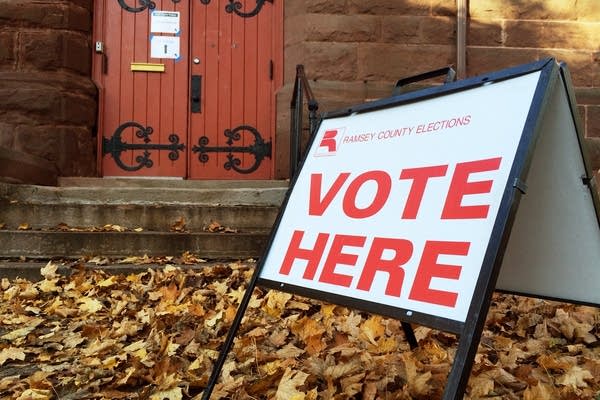Why do we vote where we vote in Minnesota?

A sign directs voters to a polling station at Dayton Presbyterian Church in St. Paul in 2015. More than 500 churches will serve as polling places in Minnesota this election.
Peter Cox | MPR News
Go Deeper.
Create an account or log in to save stories.
Like this?
Thanks for liking this story! We have added it to a list of your favorite stories.


